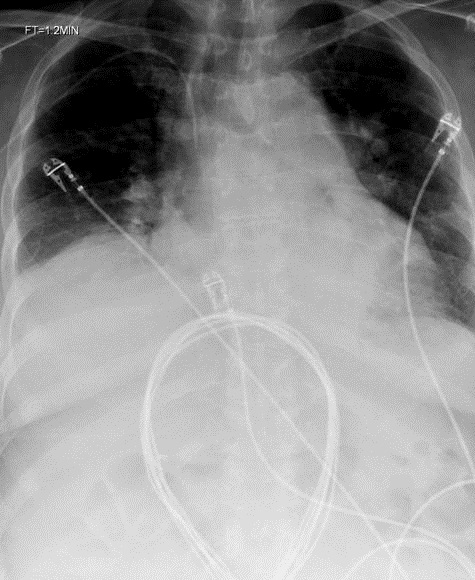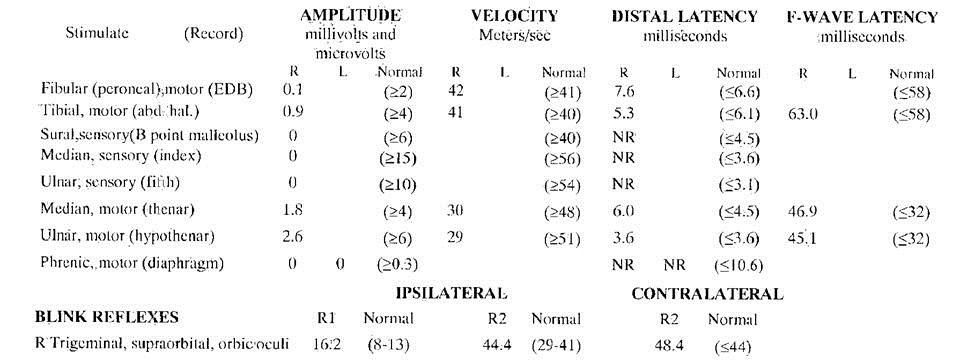

Correct!
2. Sniff test
Of the tests listed, the sniff test is the most appropriate. The sniff test is a fluoroscopic exam used to assess diaphragmatic movement. Normally the diaphragm moves down during sniffing. Bronchoscopy might be reasonable if an endobronchial obstruction was suspected. Thoracic PET scan is usually done when assessing a lung mass or nodule and CT angiography is usually done when pulmonary embolism or other vascular abnormality is suspected. Video-assisted thorascopic surgery (VATS) is overly aggressive and not indicated.
The sniff test showed normal hemidiaphragm excursion on the left but paradoxical on the right (Figure 2).

Figure 2. Static chest x-ray taking during the sniff test showing the persistently elevated right hemidiaphragm.
Neurology was consulted and suggested a lumbar puncture (Figure 3) and nerve conduction studies (Figure 4).

Figure 3. Pertinent findings from lumbar puncture.

Figure 4. Nerve conduction velocity studies.
Which of the following is the best explanation of the patient's findings? (Click on the correct answer to proceed to the fourth and last panel)